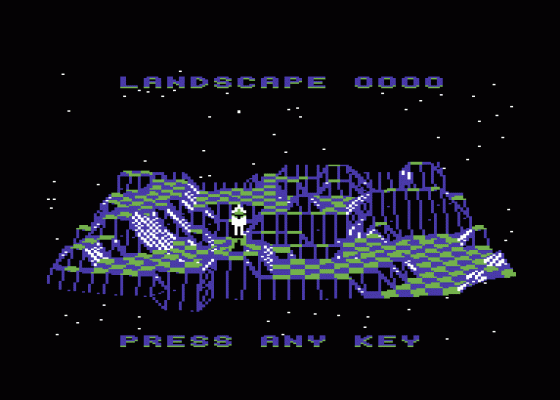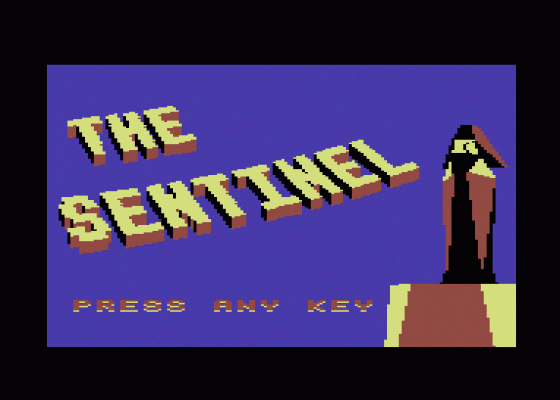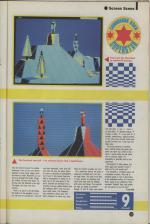
Commodore User
 1st January 1987
1st January 1987
Categories: Review: Software
Author: Fred Reid
Publisher: Firebird
Machine: Commodore 64
Published in Commodore User #40
Camelot Warriors
With a name like Camelot Warriors, I think I'm entitled to expect the worst. Well, I certainly had doubts about this one even before it had loaded! Being a bit pessimistic does have its advantages though, occasionally you're pleasantly surprised, as I was when I started playing the game.
The plot is original, you are magically transported through the ages to the time of King Arthur. In the guise of a knight in shining armour you must battle your way through three scenarios to Camelot Castle, collect on your way various present-day objects unfortunately trapped in the wrong time zone and deliver them to the guardian of that world.
The game's objective? Enter Camelot and find out what you are doing there!

The first scenario you will encounter is a forest full of nasty owls and spiders. Take the light bulb to the sorcerer and you will be turned into a toad! Whether this helps your quest or not I will leave up to you to find out. Scenario two is a lake full of flesh-eating fish and electric eels, while the third scenario is a system of underground caves with bats and poisonous plants.
Only after you've passed unscathed through all three will you arrive at Camelot Castle and the end of your quest. Your only weapon is the medieval broadsword, effective against anything that flies, other enemies will have to be jumped. Time is on your side though, except for in the caves, where the air turns bad if you hang around too long.
The game's graphics occupy the whole screen, a bit of a rarity these days! The graphics themselves scroll smoothly in four directions and look very neat. I was particularly impressed by the animation, when the knight takes a swing at an owl you almost want to duck!

Musically, the game is silent bar the usual sound effects, although the title screen plays something very close to 'Scarborough Fair'. You don't score points in this game, you either win or lose. I found the first three levels pretty easy, the castle offered a little more of a challenge though. Most of the screens can be solved simply by watching the movement cycles of the nasties you are trying to avoid.
On the whole, a pleasant little distraction. It won't take you long to make progress through the game, in fact I think I've nearly finished it. Still, Christmas is nearly upon us and Camelot Warriors would make someone a lovely pressie! But there again with so many good games around for a tenner, maybe not.
Scores
Graphics 70% Sound 60% Toughness 30% Endurance 50% Value For Money 60% Overall 70%

Legions Of Death (Lothlorien) =============================
Legions Of Death
The Punic wars between ancient Rome and Carthage are the subject of the latest offering from Argus-controlled Lothlorien.
Unfortunately, it is also another attempt to popularise wargames by swamping the game in icons. In fact, the game has so many icons you need the chart supplied on the back of the inlay card supplied on the back of the inlay card to find your way through them! To make things worse some icons have different meanings depending on where they appear in the chart. Perhaps the icons need icons to help them find their way!

Underneath this sea of icons is a map of the Mediterranean showing the empires in conflict.
Before battle can begin, you must define not only your selection of ships and their crew type, sails, archers, number of marines and whether they have sails, a boarding platform or archery tower but also the number of cities you must take, gold you must collect and ships you must sink to win the game!
Each turn you can use any or all of your ships as they attempt to pillage the opposing cities, grapple and sink the enemy ships and win the way by controlling the seas.
The ensuing war can be played either against the computer or a human opponent. However, if you play your C64 you're at an immediate disadvantage as you play Carthage the historical losers.
To add to your problems, all your ships begin the game in your ports leaving Rome initial control of the seas, so don't be surprised if you suffer a few early losses.
The Romans also seem to attack in packs so you must ensure you don't leave any lone ships for them to prey on.
Your choice of ships determines your strategy which will lie somewhere between a small elite fleet that will have trouble policing the whole of the Med and a large weak fleet that seeks safety in numbers.
It is ironic that the icon system that is supposed to make the game easy to use actually spoils it with a simple move command requiring eight joystick presses!
This slows the action down, particularly the need to move a cursor around the map at a snail's pace.
The Punic Wars are an ideal subject for a wargame as the naval conflicts between ancient warships was unpredictable. However, the game sets the action at too grand a scale as you move entire fleets around oceans and loses this feeling of ship to ship action as the units become dots on the screen rather than arrow firing, ramming, warships.
Potentially a good game that has been spoilt by trying to be too user-friendly!
Legions Of Death will attract its own cult following, but once again the masses will ignore the fascinating hobby of wargaming.
Scores
Graphics 60% Sound 40% Toughness 70% Endurance 50% Value For Money 50% Overall 70%
The Sentinel (Firebird) =======================
The Sentinel
Someone somewhere must have a pretty warped imagination to have dreamt this one up! That means you're going to have to have a pretty warped mind to play it!
The Sentinel is a totally original game concept, backed up with the kind of graphic quality we must by now come to expect from a distinguished software house like Firebird. Strategy is the key here, joystick bashing will get you nowhere, especially considering the fact that the game is totally keyboard controlled.
Whilst The Sentinel is loading, you can feast your eyes on a stunning picture, a huge alien eye leaps off the screen at you, threatening to devour your pet hamster. The game actually loads very quickly for a game of this complexity, this fact will certainly save quite a few chewed fingernails.
After selecting the landscape at which you want to start (newcomers start at '0000'), the screen blanks for a few seconds and you will see a preview of the whole landscape. This is the time to plan your assault on the Sentinel.
The general idea is to remove the Sentinel and occupy the square he stands on, a little like Chess. Only then can you hope to advance to higher levels.
The playing area consists of many hills, peaks, and chequered plateaus littered with boulders and trees. At the highest point of the playing area (obviously the best vantage point) stands the Sentinel, guardian of this world. You begin your quest on one of the lowest squares.
The object of the game is to depose him by absorbing his energy, and your assult on this throne must be carefully planned. You move around the scene by pointing your cursor at the square you wish to move to and creating a robot on that square. This costs you one unit of energy.
Next, you transfer yourself to the robot and re-absorb the energy (also one unit) from the robot you have just left. Because your robot's head has quite a significant height above the playing area, you can see squares slightly higher than the one you are on, thus it is possible to move upwards towards the Sentinel.
Warning! The Sentinel is not stupid! Once you start to shift energy around, he'll spot you in an instant. Until then though, you're free to view the scene and work out where you are. Quick sketches made during the landscape preview come in useful here.
Once he's spotted you, he'll attempt to drain your energy by absorbing it unit by unit until you're finished! When the Sentinel absorbs a unit of energy, he'll redistribute that energy in the form of a tree on the landscape.
You can, of course, add to your own energy by absorbing the trees the Sentinel has created! You can pull the wool over the Sentinel's eyes for a short while by creating a boulder or a tree between you and him, but he's not stupid, he'll turn a tree into a Meanie who'll flush you out into the open.
If you get into real trouble, there's only one way out, a quick hyperspace to a random square. It'll cost you three units of energy, and even then it's a bit risky.
The basic unit of energy is the tree. Boulders are worth two units while robots are worth three. When the Sentinel absorbs energy, he does so one unit at a time, thus a robot will first be turned into a boulder and then a tree. Boulders are pretty useful things; you can stack them and place things atop them. This way, you can gain the extra height you need to advance on the Sentinel.
The scenario just described is the first of - wait for it - 10,000 possible landscapes! To move to another landscape, depose the Sentinel as previously described and hyperspace from this square. You will then be thrown forward to another landscape. How far you are thrown depends on how many energy units you have in credit. Naturally, as you move up through the levels, things get trickier. On any level above '0', sentries join the Sentinel in his vigil. The higher the level, the more sentries...
There's no point in me describing the quality of the graphics to you, you can see for yourselves! I can tell you how impressed I was (and still am) with the way the game 'plays'. It's hard to describe an atmosphere. Let's face it, few games have any kind of atmosphere to speak of, at least not in the true sense of the word. Sentinel felt different from anything I've ever played before, like the computer didn't exist and you were really there. The Sentinel's eyes seemed to pierce your very heart whenever he faced you, even when he couldn't actually see you!
As I mentioned before, the game is keyboard controlled and I can see the logic there. You need to be able to react quickly to situations and you'll have little time for fiddling with icons and things. The controls are kept as simple as possible though, 'S' and 'D' move your cursor left and right, 'L' and '<' move it up and down. 'A' absorbs energy, 'R' creates a robot, 'T' a tree and 'B' a boulder, maintaining a logical pattern. A few other keys provide some more useful functions, but I won't go into them here.
The music deserves a mention here, nothing during the game, but when you move up a level or die a death, a guitar wells up and takes you by surprise. Again, it's impossible to describe such a rare experience.
Instructions? A little sparse, but there again you wouldn't want it spelt out for you, would you?
The Sentinel is a brilliant game, set to become a classic. This one is certainly going to rock a few boats in the software market, it'll certainly find a space in my collection. Final comment: Firebird! How (and when) are you going to top this one?
Other Reviews Of The Sentinel For The Commodore 64
The Sentinel (Firebird)
A review
Sentinel (Firebird)
The Sentinel is watching you! Is it a sure Firebird success or is it just eye in the sky?
This article was converted to a web page from the following pages of Commodore User #40.













